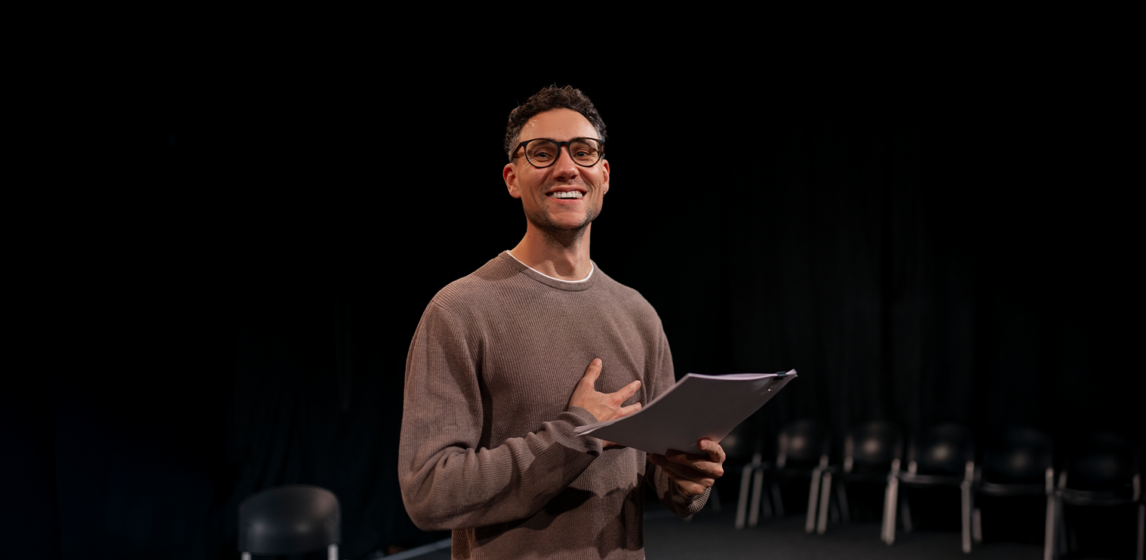No name-calling allowed: Helping young people understand the power of labels in an otherizing world
 Mary Glenn | Nov 7, 2016
Mary Glenn | Nov 7, 2016
Hundreds of thousands of people gather to watch the Rose Parade in Pasadena every year on January first, and I’m usually with them. This year as people were enjoying the floats and bands on a sunny winter day, attention was drawn to the skywriter creating a series of negative statements about a certain presidential candidate. I was with family friends, including a ten-year-old girl. I wondered, How do I explain this name-calling to her?
Of course, the name-calling only accelerated as the year went on, from all sides of the election.
Any observer to US and world events can conclude that name-calling and labeling has become acceptable, even commonplace. But what does name-calling do to our hearts? How does name-calling lead to viewing others as less valuable? How does this impact the students we work with who are taking note of our attitudes and behaviors? How do students process when we speak of God’s love for all people and then dismiss that very fact by disqualifying “those people”? And how do we teach students that just because devaluing others has become commonplace, this doesn’t justify our doing the same?
Name-calling and otherizing
At times labels can help us understand each other and ourselves. For instance, I often identify myself as my grandmother’s granddaughter. I cherish this label of identification and value. It denotes that I was loved and cherished by my grandmother and encourages me to reflect her honorable qualities. However, labeling is often used to separate, devalue, and otherize.
Otherizing means to make or regard a person or social group as alien or different, separate from “us”. By “othering” or “otherizing”, we mean any action by which an individual or group becomes mentally classified as “not one of us” and potentially labeled in some way less human, less worthy of respect and dignity than we are. Neuropsychological research has revealed that otherizing is “an innate and universal human capacity. As soon as we place people outside of the circle of ‘us’ the brain automatically begins to devalue them and to justify bad treatment of them.”[1]
This process turns into a cycle. Reflecting back on the New Year’s Day parade, when the skywriter called out the political candidate as a bully, they did so by bullying the bully. This is an example of “otherizing the otherizer.”
The impact of name-calling and otherizing
We all identify with one or more tribes—groups to which we belong such as family, churches, schools, or political parties. Universities, for example, are particularly adept at drawing alumni to carry out a lifelong tribal affiliation. Part of being in a tribe is an inherent tendency to judge anyone outside the tribe. Father Greg Boyle, founder of the expansive Homeboy Industries among the gang communities of Los Angeles, writes, “If there is a fundamental challenge within these stories, it is simply to change our lurking suspicion that some lives matter less than other lives.”[2]
Otherizing can lead to denial of our shared humanity and our identity as those made in the image of God. Otherizing may assume what it is like to walk in others’ shoes, to know motives of hearts, to categorize people as good or bad, or may result in judgment rather than blessing. Students may have real pain as a result of being bullied or hurt by others’ name-calling. Name-calling and bullying might be more widespread than we are aware among teenagers we know.[3] Hurt, offenses, and injustices are real, and we don’t want to minimize what students have experienced.
In 1968 a film crew captured an experiment already in its third year. The documentary A Class Divided tells the story of Jane Elliott, a teacher who created an exercise for her third-grade students the day after the assassination of Dr. Martin Luther King, Jr. Elliott wanted to teach her students from a mostly white Iowan town how prejudice impacts us all. She divided students into two groups that day—those with blue eyes and those with brown eyes. She declared blue-eyed children superior and treated them accordingly.
Within a few hours, name-calling and division between the two groups ensued. Students who had loved each other were now physically fighting and isolated from each other. Classroom behavior and performance declined or increased depending on which group the students had been placed in. The next day, she switched the groups. Students who had been discriminated against the prior day were quick to change places. At the end, Elliott debriefed with her students, who quickly made connections between their experience and racism in the US.
Film crews not only filmed students in 1970, but also fifteen years later in 1985. One student recalled, “It felt tremendously evil. You could—all your inhibitions were gone. And no matter if they were my friends or not, any pent-up hostilities or aggressions that these kids had ever caused you, you had a chance to get it all out.” Now a national diversity trainer, Elliott has provided decades of insight into the power of labeling.
From othering to one-anothering
Name-calling and labeling impacts us all, but how can we respond differently? In his Letter from a Birmingham Jail dated April 16, 1963, Martin Luther King, Jr. responded to white clergymen who accused him of being a troublemaker in his fight for equality. He wrote, “All [people] are caught in an inescapable network of mutuality, tied in a single garment of destiny. Whatever affects one directly, affects all indirectly. I can never be what I ought to be until you are what you ought to be, and you can never be what you ought to be until I am what I ought to be.” MLK identified himself as their brother in Christ, even though they had not treated him as such. He identified their shared humanity rather than otherizing them for bullying and terrorizing him and others.
The phrase "one another" is derived from the Greek word allelon, which means, "one another, each other; mutually, reciprocally." It is used 100 times in the New Testament. Approximately 59 of those occurrences are specific commands teaching us how (and how not) to relate to one another. In the way of Jesus, “one-anothering” can lead to mutuality. Mutuality—marked reciprocity and mutual dependence—can ensure that an interaction between people or tribes is not just about meeting one’s needs but about empathy, concern between parties, and a sense of self as part of a larger relationship unit. One-anothering and mutuality is what “loving our neighbor as ourselves” (Luke 10:27) can look like.
In Matthew 3:13-17 (the baptism of Jesus), the Father proclaims over Jesus, “This is my Son, whom I love; with him I am well pleased.” Read this text and reflect on the Father speaking this over the Son. After a few minutes, read the passage again and reflect on the Father speaking this over you. Then read the passage a third time and reflect on the Father speaking this over those around you—your neighbors, coworkers, others. How might this passage impact the way you see Jesus, yourself, and those around you?
Loving our other isn’t something we can do in our own strength, but rather we rely on God to lead us in this holy act. Nelson Mandela describes the African concept of ubuntu as, I need you in order to be me, and you need me in order to be you. How will we help our students see more of our shared humanity in the world? By helping them see that we need each other in order to be who we are, made in the image of God.
Where do we start?
- Model for and teach students how to speak well of others: avoiding stereotypes and labels, assuming the best rather than the worst, focusing on strengths/gifts first rather than shortcomings.
- Give space for listening to others’ stories. Help your leaders and students to consider what others may be going through and the pain they may be carrying. As the Sioux Indian prayer goes, “help me never to judge another until I have walked in their moccasins.” Consider providing empathy training for leaders and students.
- Pray together for those you identify as enemies or “others,” both locally and globally.
- Share your own story with students—perhaps about a time you were otherized and how it made you feel, or when you otherized someone and how you saw them differently. Read Psalm 139 together and reflect on how God sees each of us.
- Lead a youth group activity in which you challenge students to discover commonalities with people they think are most different from them or those with whom they disagree.
- More resources for processing painful local and national events with students.
[2] Gregory Boyle, Tattoos on the Heart: The Power of Boundless Compassion (Free Press, 2011).
[3] According to one online survey of young women ages 16-21, nearly two-thirds of young women say they have been bullied. What’s more, 78 percent say bullying is worse than parents realize. See Brad Griffin, “How Do You Talk With Kids About Bullying?”
More From Us



Sign up for our email today and choose from one of our popular free downloads sent straight to your inbox. Plus, you’ll be the first to know about our sales, offers, and new releases.



